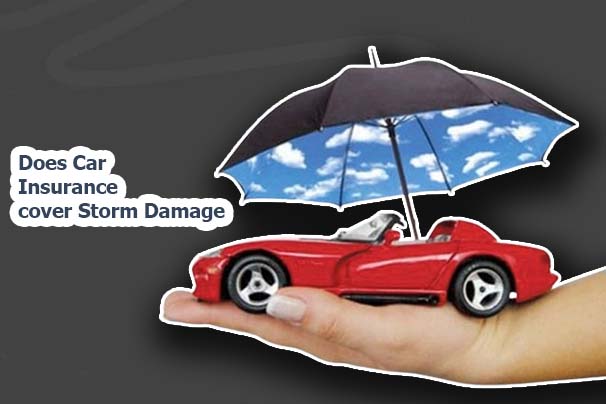
Does car insurance cover storm damage? This is an online frequently asked question that requires more detailed information. Storms and other weather-related incidents can cause huge damage to your car, SUV, or truck. Whether it is the annoyance of hailstones or the devastation of a flood or tornado that creates marks on the roof of your vehicle, it can be very expensive to repair your car if it is damaged by a storm.

This is why most policyholders wonder if their car insurance policies cover the damages caused by a storm. And as with car insurance policies, the contract language can be very confusing and difficult to understand. Read this article to the very end to learn how car insurance covers storm damage.
Does Car Insurance cover Storm Damage
A basic car insurance policy that only contains liability insurance will cover the medical expenses and property repairs for other people if your car injures them or damages their property while driving during a storm. It also covers legal fees if you get sued because of an accident. However, you have to know that this policy won’t cover any damage to your own car from the storm.
To cover your car from storm damage, you will have to purchase comprehensive and collision insurance. Although these are not legally required, many lenders. And leasing companies insist that drivers who need to lease or finance their cars have them.
Collision insurance helps to pay to repair or replace your car if you’re in an accident. Even if the accident was caused by you. For instance, if you skid on a wet road and crash into another person’s car, a guardrail, or a ditch, collision insurance will cover the repairs.
Comprehensive insurance will protect your car from various non-collision incidents, such as natural disasters, hitting an animal, or theft and vandalism damage.
What Weather-Related Damage Does My Car Insurance Policy Cover?
A car policy that has comprehensive insurance will protect your car from different weather-related damages during a storm. This will include hail, lightning, falling tree branches, and wind damage from hurricanes and tornadoes. Surprisingly, it may also help cover floods and earthquakes, which are usually not covered by homeowners insurance.
Additionally, comprehensive insurance can help cover damage from road debris, though some types, like flying tar and gravel, may not be included. It is very important to review your policy details to understand what specific weather-related damages are covered. This is because your insurer might exclude certain “acts of God” typically included in a comprehensive policy.
What Should I Do If My Car Is Damaged by a Storm?
After a storm, the first thing you need to do is check your car for damage to see if it’s bad enough to contact your insurance provider. You should know that filing a claim can increase your rates. So only do it if repair costs are higher than your deductible—the amount you pay out of pocket towards every claim.
If you decide to file a claim for storm damage, prevent further damage. By covering cracked windows or windshields and making minor repairs. Dry out your car thoroughly in order to prevent odors, rust, and other water damage.
Also, remember that your auto insurance doesn’t cover personal belongings inside your vehicle that were damaged by a storm. For those items, you may have to file a claim with your homeowner’s insurance under personal property coverage.
How Can I File a Car Insurance Claim for Storm Damage?
The following are the steps you can take to file an insurance claim: If your car is damaged during a storm,
- If people were injured, the first thing you need to do is call 911 so the first responder can tend to them and the police can fill out a report.
- Take pictures and other evidence of the damaged part of the car. If the damage was caused by a car crash, ensure that you exchange contacts with the other party.
- Contact your insurer and inform them about the vehicle damage.
- Submit every important document to them, such as police reports and evidence taken.
- Ensure that you know your coverage limits and deductible. So that you can have a good knowledge of the amount you expect to get from your insurer.
- Contact an auto repair shop to know the amount the repair will cost.
- Accept the reimbursement if you agree with the settlement and make use of it to repair your vehicle.
If the reimbursement does not cover the costs of the car replacements or repairs fully or your claim is denied, you may be able to contact the Federal Emergency Management Agency (FEMA). FEMA other needs assistance can help you out in repairing or replacing a damaged car by a federally declared disaster under specific circumstances.